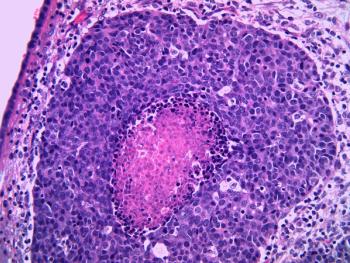
4 Recent Drug Approvals for Pharmacy Techs to Know
Learn about the new drugs and expanded indications approved by the FDA in November 2015.
Learn about the new drugs and expanded indications approved by the FDA in November 2015.
The FDA approved Novartis’ seasonal influenza vaccine Fluad on November 24, 2015.
The agency authorized the vaccine to be administered to prevent the seasonal flu among patients ages 65 and older. In recent years, approximately 90% of influenza deaths have occurred in this population, according to the US Centers for Disease Control and Prevention.
“Immunizing individuals in this age group is especially important because they bear the greatest burden of severe influenza disease and account for the majority of influenza-related hospitalizations and deaths,” said Karen Midthun, director of the FDA’s Center for Biologics Evaluation and Research, in a press release announcing the vaccine’s approval.
A trivalent vaccine produced from 2 subtype A virus strains and 1 type B strain, Fluad is the first flu shot to contain an adjuvant, which are included in some vaccine to enhance patients’ immune response.
Adverse events associated with the administration of Fluad include fever, tiredness, headache, and muscle joint pain.
<!--page--!>
On November 18, 2015, the FDA approved Lightlake Therapeutics and Adapt Pharma’s naloxone hydrochloride (Narcan) nasal spray to stop or reverse the effects of an opioid overdose.
Naloxone has been used for this purpose for over 40 years, but it was previously available only in injectable forms, which are more difficult to administer than nasal sprays and carry a risk of a contaminated needle stick.
The FDA made its decision shortly after granting
The use of Narcan in opioid-dependent patients may trigger severe opioid withdrawal, the symptoms of which include body aches, diarrhea, tachycardia, fever, runny nose, sneezing, piloerection, sweating, yawning, nausea or vomiting, nervousness, restlessness or irritability, shivering or trembling, abdominal cramps, weakness, and increased blood pressure.
Additionally, those administering Narcan should seek further immediate medical attention on the patient’s behalf, as the drug is not a substitute for immediate medical care.
<!--page--!>
On November 4, 2015, the FDA granted approval to GlaxoSmithKline’s mepolizumab (Nucala) as an add-on maintenance treatment for patients ages 12 and older with severe asthma.
The drug, which reduces severe asthma attacks by decreasing blood eosinophil levels, is administered by a health care professional once every 4 weeks via subcutaneous injection into the upper arm, thigh, or abdomen.
Side effects associated with the use of Nucala include headache, injection site reactions, back pain, and fatigue.
Additionally, hypersensitivity reactions such as swelling of the face, mouth, or tongue; fainting; dizziness; lightheadedness; hives; breathing problems; and rash were observed in trial patients within hours or days of administration.
<!--page--!>
The FDA expanded the indication of Boehringer Ingelheim’s blood-thinner dabigatran etexilate mesylate (Pradaxa) on November 23, 2015, approving the drug for the prophylaxis of deep vein thrombosis (DVT) and pulmonary embolism (PE) in patients who have had hip replacement surgery.
Pradaxa was initially approved in 2010 to reduce the risk of stroke and systemic embolism in patients with non-valvular atrial fibrillation. The FDA later updated the drug’s label in 2014, allowing it to be used to treat DVT and PE in patients who have been treated with a parenteral anticoagulant for 5 to 10 days, as well as to reduce the risk of recurrent DVT and PE in patients who were previously treated.
In
The most common adverse events reported by trial participants were gastrointestinal disorders such as dyspepsia and gastritis-like symptoms.
Newsletter
Stay informed on drug updates, treatment guidelines, and pharmacy practice trends—subscribe to Pharmacy Times for weekly clinical insights.

















































































































































































































